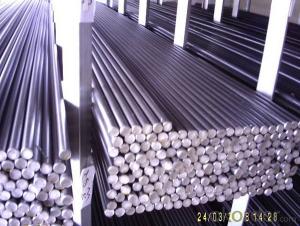Steel rebar, also known as reinforcement bar, is a critical component in modern construction projects. It’s the backbone that strengthens concrete structures, ensuring they stand the test of time. But what exactly is steel rebar, and how is it used in various applications? Let’s dive into the world of steel rebar and explore its specifications and uses with a personal touch and a bit of flair.
The Essence of Steel Rebar
Imagine the strength of steel combined with the versatility of concrete. That’s the magic of steel rebar. It’s not just a piece of metal; it’s a key player in the construction industry. Steel rebar comes in various shapes and sizes, but its primary purpose remains the same: to reinforce concrete and prevent it from cracking or breaking under stress.
A Closer Look at Specifications
When it comes to steel rebar, specifications matter. The most common types of steel used for rebar are Grade 40, 60, and 75, each with its own tensile strength. The grade refers to the yield strength of the steel, which is crucial for determining how much weight the rebar can handle. For instance, Grade 40 rebar has a yield strength of 40,000 psi (pounds per square inch), while Grade 75 boasts a higher strength of 75,000 psi.
Size Matters: Rebar Dimensions
The size of rebar is measured in diameter, typically ranging from 4mm to 40mm. The choice of size depends on the structural requirements of the project. Thicker rebar can support more weight, but it’s also more expensive and requires more concrete to cover it properly. It’s all about finding the right balance for each project.
The Role of Rebar in Construction
Steel rebar plays a vital role in various construction projects. From residential buildings to bridges and highways, rebar is the unsung hero that keeps everything intact. It’s used in:
– Foundations: To provide stability and prevent the building from sinking or shifting.
– Columns and Beams: To support the weight of the structure and distribute loads evenly.
– Slabs and Walls: To prevent cracking and ensure even distribution of stress.
– Bridges: To reinforce the concrete used in bridge construction, ensuring durability and longevity.
– Highways and Roads: To strengthen pavements and prevent cracks due to heavy traffic and weather conditions.
Installation Process: A Step-by-Step Guide
Installing steel rebar is an art in itself. It requires precision and attention to detail. Here’s a simple guide to the process:
1. Measurement: Measure the area where the rebar will be placed and determine the required length and quantity.
2. Cutting: Use a hacksaw or a rebar cutter to cut the rebar to the correct size.
3. Bending: If needed, bend the rebar using a manual or hydraulic bender to fit the desired shape.
4. Placement: Position the rebar in the formwork, ensuring it’s properly aligned and secured.
5. Binding: Use wire ties or clips to secure the rebar in place before the concrete is poured.
6. Inspection: Check the rebar installation for any errors or misalignments before the concrete is poured.
The Future of Steel Rebar
As technology advances, so does the use of steel rebar. Innovations in material science and construction techniques are leading to new types of rebar with improved properties. We’re seeing the development of rebar that’s more resistant to corrosion, easier to work with, and even environmentally friendly. The future of steel rebar is bright, and it’s exciting to think about the possibilities.
Why Steel Rebar Matters to You
Whether you’re a construction professional, a homeowner, or just someone interested in the built environment, steel rebar matters. It’s the silent force that shapes our cities and towns, ensuring that the structures we rely on every day are safe and durable. Understanding the importance of steel rebar and its role in construction can help you appreciate the complexity and ingenuity behind the buildings and infrastructure we take for granted.
Wrapping Up
Steel rebar is more than just a material; it’s a symbol of strength and resilience. It’s the unsung hero of the construction world, and it’s time we give it the recognition it deserves. So next time you walk past a construction site or admire a sturdy bridge, take a moment to appreciate the steel rebar that’s quietly doing its job, keeping everything together.

